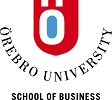No 2009:7: Alcohol Use and Social Interactions among Adolescents Do peer-effects exist within and/or between the majority population and immigrants?
Mikael Svensson ()
Additional contact information
Mikael Svensson: Department of Business, Economics, Statistics and Informatics, Postal: Örebro University, Swedish Business School, SE - 701 82 ÖREBRO, Sweden
Abstract: Are adolescents who attend schools with a high level of alcohol use more likely to use alcohol themselves? This paper analyzes peer-effects in adolescent alcohol use based on a survey of 13,337 adolescents in Sweden in 2005. The empirical analysis uses multi-level logistic model to handle non-observable heterogeneity between the schools and the results show that attending a school with a high level of alcohol use is a strong predictor of alcohol use for the individual. However, a positive association is only seen within Swedes and within non-Swedes (1st and 2nd generation immigrants). Between Swedes and non-Swedes there is actually a negative association, i.e. if many Swedes drink in a certain school, alcohol use among non-Swedes is lower (and vice-versa). An exception to these results are schools with a very low share of non-Swedish adolescents, where non-Swedes alcohol use also is positively associated with Swedish peers’ alcohol use.
Keywords: Alcohol use; Adolescents; Peer-effects; Immigrants; Sweden
22 pages, May 13, 2009
Questions (including download problems) about the papers in this series should be directed to ()
Report other problems with accessing this service to Sune Karlsson ().
This page generated on 2024-02-05 17:13:02.

